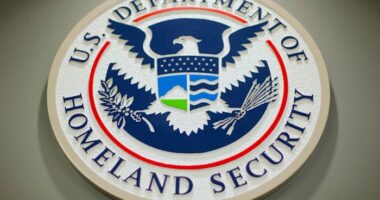Share this @internewscast.com

() Recent U.S. military airstrikes on Iranian nuclear facilities have raised the stakes in an already volatile region. While the latest tensions between Tehran and Washington may appear sudden, the hostility has been building for decades.
The latest clash isn’t just about last week’s intense fighting between Iran and Israel. It’s also about what’s been building for 70 years. Here’s how the United States and Iran, which were once close allies, got here:
1953: US-backed coup in Iran installs shah
In 1953, a CIA-backed coup toppled Iran’s democratically elected leader and restored the shah, who was loyal to the U.S. Though seen as a strategic win at the time, Iranians never forgot.
President Dwight Eisenhower’s “Atoms for Peace” initiative laid the foundation for Iran’s nuclear program. The U.S. provided education and nuclear technology, and later supplied Iran with a nuclear reactor and weapons-grade enriched uranium fuel.
1979: Iran hostage crisis
However, the partnership came to a halt in 1979, when the Islamic Revolution overthrew the shah.
Soon after, 52 Americans were taken hostage from the U.S. Embassy in Tehran and held for 444 days.
1980: War, sanctions and direct conflict
The 1980s saw tensions spike further during the outbreak of the Iraq-Iran war and the Iran-Contra affair. It was a decade marred by sanctions, spies and standoffs in the Strait of Hormuz that ended with what appeared to be the powder keg erupting.
In 1988, an Iranian mine nearly sank a U.S. warship. In response, President Ronald Reagan ordered retaliatory attacks as part of “Operation Praying Mantis.” It’s the only instance in which the U.S. Navy has exchanged surface-to-surface missile fire with an enemy.
2011: Post-9/11 fallout
After the 9/11 attacks, President George W. Bush labeled Iran as one-third of the “axis of evil,” alongside Iraq and North Korea, further isolating Tehran on the world stage.
2015: Iran nuclear deal signed
Under President Barack Obama, the U.S. and other world powers signed the Iran nuclear deal, which aimed to limit Iran’s nuclear program in exchange for sanctions relief. It was hailed as a breakthrough.
2018: US withdraws from Iran nuclear deal
However, progress was reversed in 2018, when President Donald Trump withdrew the U.S. from the deal.
2020: US strike kills Qasem Soleimani
Tensions exploded again in 2020 when a U.S. drone strike killed Iranian Gen. Qasem Soleimani, accused by Trump of “plotting imminent and sinister attacks” against the U.S.
Iran retaliated, and the Middle East has since seen a steady rise in proxy conflicts.
2025: US bombs Iranian nuclear facilities
U.S. strikes on Iranian military infrastructure, the cycle of escalation appeared to be reaching dangerous new levels.
U.S. President Donald Trump claimed on social media Monday that Israel and Iran have agreed to a “complete and total ceasefire” to be phased in over 24 hours.
The U.S. president said on Truth Social that the ceasefire would bring an “Official END” to war, a major change in the hostilities that follows a U.S. strike over the weekend on three Iranian nuclear sites.
Israel and Iran did not immediately acknowledge any ceasefire, and heavy Israeli strikes continued in Tehran and other cities early Tuesday.














